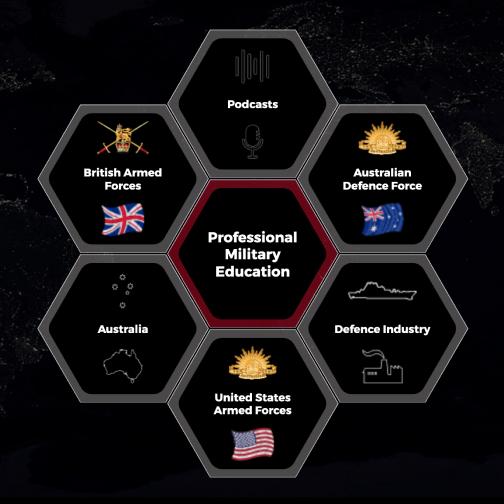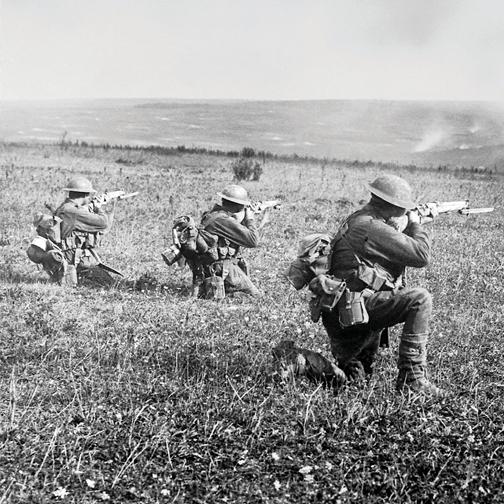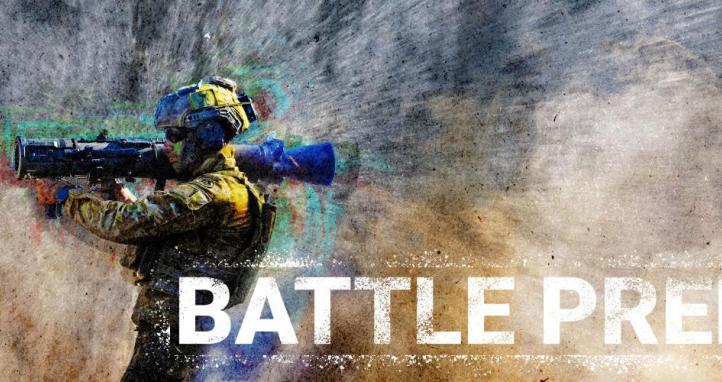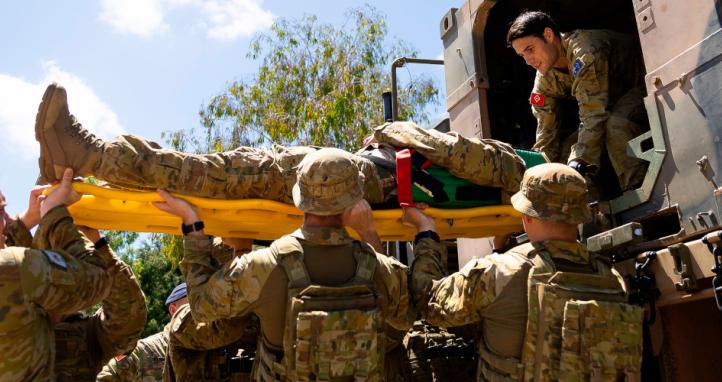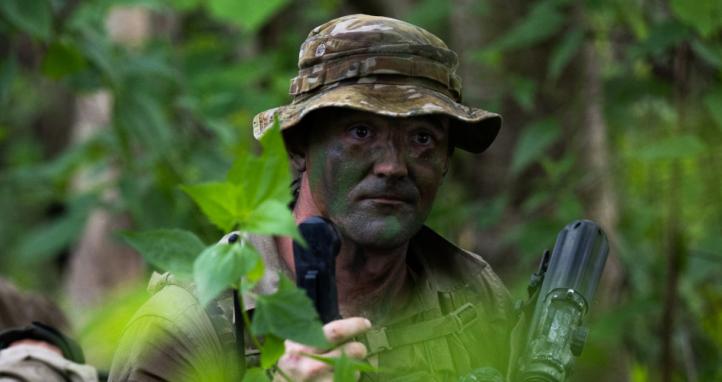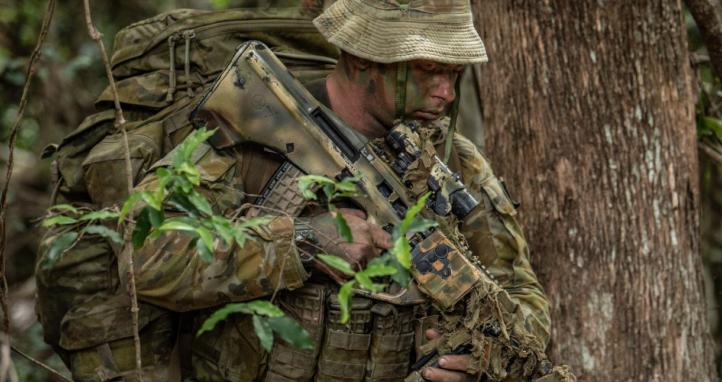Introduction
At the commencement of Israel’s campaign to destroy Iran’s nuclear capabilities, reportedly up to 30 senior Iranian military commanders were killed in minutes, including the Chief of Staff of the Iranian Armed Forces.[1] The Iranian military was quickly rendered leaderless, a critical element in setting the conditions for Israel’s dominance over Iran during this short war.
While Counter Leadership Operations (CLOs) have previously featured during conventional wars, a combination of intelligence, technology, and ethical choices has led to this tactic being increasingly used in contemporary warfare. In both the war in Ukraine and during Israel’s war against Iran, precision strikes targeting senior military personnel have been prominent. These operations go beyond simply targeting headquarters nodes, but personally targeting leaders, building on methodologies refined during the Global War on Terror. This essay argues that CLOs, enabled by advancements in intelligence and technology, will increasingly be a part of conventional warfare and the Australian Army must adapt both defensively and offensively.
A History of CLOs
During the 19th Century it was common for opposing generals to be able to see each other on the field of battle with their own eyes. Despite the military advantage that could be obtained by ‘decapitating’ an opposing force, the idea of targeting a commander was seen as distasteful. In 1815, at the Battle of Waterloo, the Duke of Wellington was reportedly horrified by a subordinate’s request to attempt to hit Napoleon with cannon fire.[2] Even when an opportunity presented, CLOs in conventional warfare were considered a dishonourable endeavour.
CLOs would continue to be rare during the First and Second World Wars, albeit snipers would often attempt to target officers at the tactical level. The most famous CLO of World War Two was Operation Vengeance, the US operation to kill the leader of the Imperial Japanese Navy, Admiral Yamamoto. Using top-secret communications intercepts, the Americans were able to position long range fighter aircraft along the route of Yamamoto’s aircraft and shoot it down over Bougainville.[3] The Imperial Japanese Navy’s most talented commander had been killed, impacting Japanese morale and ability to defend against US offensives.[4] Other CLOs occurred during the Second World War, such as Operation Anthropoid that killed Reinhard Heydrich in Czechoslovakia however, this was more focused on political outcomes rather than achieving military advantage.[5] Operation Vengeance demonstrated how intelligence, technology, and the will to execute CLOs removed the Imperial Japanese Navy’s most capable leader, providing a distinct military advantage.
Since World War Two CLOs have gradually increased in prominence, with the Global War on Terror seeing these operations arguably reaching their zenith against irregular threats. In both Iraq and Afghanistan, great effort was placed into capturing or killing insurgent leaders. The development of the Find, Fix, Finish, Exploit, Analyse, and Disseminate cycle by the United States’ Joint Special Operation Command in Iraq leading to the industrialisation of these operations.[6] CLOs, however, were not strictly limited to insurgencies, with the opening salvo of the United States invasion of Iraq designed to kill Saddam Hussein.[7] The publishing of the ‘deck of cards’ to hunt down key Iraqi leaders underscoring a deliberate strategy to neutralise the leadership of the Iraqi military.[8] Another example was in 2020, when the US chose to target the Iranian Quds Force Commander, Qasem Soleimani, with a deliberate strike in Iraq.[9] In both conventional and irregular wars, the regularity of CLOs has been steadily increasing.
Contemporary Wars
The Russo-Ukraine War and Israel’s 12-day war against Iran demonstrate that the requisite levels of intelligence, technology and the will to conduct these operations have led them to become a routine part of conventional wars. The opening salvo of Israel’s strikes into Iran was devastating for the Iranian military; however, this is not the only recent occurrence of Israel using this tactic. As recently as September 2025, Israel chose to strike into neutral Qatar to kill Hamas leaders.[10] While this example and the strikes during the 12-day war relied on air power, Israel has previously utilised its intelligence agencies and special forces to conduct unconventional strikes. Perhaps the most unconventional was the use of a remote-controlled machine gun to kill a leading scientist of Iran’s Nuclear Program in 2020.[11] Israel, however, is not the only country that is routinely conducting CLOs against other states.
In their efforts to defend against Russia’s invasion, Ukraine has also focused on targeting Russian military leaders, both on and off the battlefield. On the battlefield Ukraine has proven adept at targeting Russian generals, with reportedly up to 10 killed during the conduct of the war.[12] With the ‘gamification’ of targeting Russians by Ukrainians,[13] deliberate strikes on Russian leaders, using long range missiles and first-person view drones, is likely to increase. Even if Russian generals can’t be kinetically targeted, the threat of CLOs can impact their ability to command and control their forces, providing an advantage to the Ukrainians.
The Ukrainians have also targeted Russian leadership away from the frontline, with three killed by IEDs, including one that was concealed within an electric scooter in Moscow.[14] While the attacks away from the battlefield are not likely to be conducted by the military, it demonstrates a shift in mentality, where any senior military leader could be considered a legitimate target, even in a capital city away from the frontline. Regardless of the ethics and legality of these operations, military leaders are being targeted inside and outside of conflicts, with few geographic bounds. Ukraine and Israel have set a precedent that other nations will likely follow to achieve similar military advantages. As technology, such as machine learning and artificial intelligence makes it easier to process large data sets, the ability to locate military leaders will become easier, further fuelling this trend.
Defensive Implications
Given the success of Israel and Ukraine in conducting CLOs, it is probable that leaders of the Australian Army will face similar threats in a future war. Given no Australian generals have been killed in action since the First World War, it is difficult to predict the impact this will have on the Army. If measures aren’t taken to mitigate this threat, either by disrupting technology, or denying intelligence that support CLOs, Australian Army leaders will be highly vulnerable.
If Australia is approaching a major conflict, it is critical that the Army institutes appropriate counter-intelligence measures to deny targeting opportunities. Senior leader travel plans, working locations, and communications will need to be elevated in security classification, both in Australia and forward locations. To combat the technology that may be used to target leaders, protective security details capable of defeating drone and IED threats will be necessary. Domestically this will require a significant change in mentality and authorities, as well as potentially a new role for the Military Police. To mitigate this threat, the Army must rehearse succession of command at the most senior levels to ensure resilience. If the Australian Army is to remain functional, both as an institution and operationally, it will need to mitigate the threat of CLOs in wartime. This will require rehearsal, investment, and discipline. While the Australian Army’s priority should be defending against this threat, the opportunity afforded by CLOs shouldn’t be discounted.
Offensive Implications
Given its experience during the Global War on Terror and emerging long-range strike capabilities, such as the Precision Strike Missile,[15] the Australian Army already has the intelligence and technological capabilities to be able to conduct CLOs. If Australia finds itself fighting a more powerful adversary in a future conflict, CLOs will offer a critical asymmetric advantage. While the effects of CLOs may only be temporary, Israel showed with their strikes on Iranian leadership that they can be decisive. For the Australian Army the key barriers to conducting these operations will not be technology, but the ethical and legal challenges.
To conduct CLOs the Australian Army will need to satisfy itself that the personnel being targeted are taking part in hostilities, thus making them legitimate targets. Targeting enemy leadership on the battlefield will remain uncontentious; however, these leaders will be low payoff and better protected. CLOs against strategic and operational leaders will have greater impact but are more likely to take place off the battlefield. To ensure they can be legitimately targeted, the Australian Army needs to develop doctrine and conduct rehearsals to navigate the ethical and legal challenges. To ensure continued compliance to Australia’s obligations under the law of armed conflict, CLOs must be proportional and a military necessity. It is critical, however, to note the risk of escalation if Australia conducts CLOs. If conducted outside defined operational areas adversaries will potentially use this as justification for reciprocal strikes against military leaders in Australia.
Conclusion
Israel’s war on Iran and the Russo-Ukraine War have shown that the intelligence, technology, and will to conduct CLOs in conventional wars is increasing. Failing to prepare for and leverage CLOs risks not only the decapitation of Australia’s command in wartime but also forfeiting a decisive operational advantage. The Australian Army must act now to integrate CLOs into doctrine, training, and strategy.
End Notes
[1] Howard Goller and Jonathan Landay, ‘Israel Killed 30 Iranian Security Chiefs and 11 Nuclear Scientists, Israeli Official Says | Reuters’, Reuters, 28 June 2025, https://www.reuters.com/business/aerospace-defense/israel-killed-30-ira….
[2] G.R. Gleig, The Life of Arthur Duke of Wellington (London, 1869), 267.
[3] Francis Pike, Hirohito’s War: The Pacific War, 1941-1945, Paperback edition (Bloomsbury Academic, 2016), 619–20.
[4] ‘Operation Vengeance: The Killing of Isoroku Yamamoto’, The National WWII Museum | New Orleans, 26 April 2023, https://www.nationalww2museum.org/war/articles/operation-vengeance-kill….
[5] Adam Leong Kok Wey, ‘Operation Anthropoid’, The RUSI Journal 157, no. 2 (2012): 70, https://doi.org/10.1080/03071847.2012.675808.
[6] Mitch Ferry, ‘F3EA — A Targeting Paradigm for Contemporary Warfare’, Australian Army Research Centre 10, no. 1 (2013), https://researchcentre.army.gov.au/library/australian-army-journal-aaj/….
[7] Julian Borger and James Meek, ‘Bid to Assassinate Saddam’, World News, The Guardian, 20 March 2003, https://www.theguardian.com/world/2003/mar/20/iraq.jamesmeek.
[8] Staff, ‘US Shows off New Card Trick’, World News, The Guardian, 11 April 2003, https://www.theguardian.com/world/2003/apr/11/iraq3.
[9] Kenneth F. McKenzie Jr, ‘Opinion | Lesson of the Strike That Killed Soleimani’, The Wall Street Journal, 4 January 2024, https://www.wsj.com/opinion/lesson-of-the-soleimani-strike-quds-iran-de….
[10] Tal Shalev, ‘Israel Carries out Strike Targeting Hamas Leadership in Qatar | CNN’, CNN, 10 September 2025, https://edition.cnn.com/2025/09/09/middleeast/qatar-hamas-israel-strike….
[11] Ronan Bergman, ‘The Scientist and the A.I.-Assisted, Remote-Control Killing Machine’, The New York Times, 18 September 2021, https://www.nytimes.com/2021/09/18/world/middleeast/iran-nuclear-fakhri….
[12] Lucy Papachristou, ‘Senior Russian Commanders Killed by Ukraine since Start of the War | Reuters’, Reuters, 3 July 2025, https://www.reuters.com/world/europe/senior-russian-commanders-killed-b….
[13] Paul Adams, ‘Ukraine Launches New Points for Killing Russians Scheme’, BBC, 18 July 2025, https://www.bbc.com/news/articles/c80p9k1r1dlo.
[14] Amy Walker, ‘Ukraine Says It Killed Russian General Igor Kirillov in Moscow’, BBC, 17 December 2024, https://www.bbc.com/news/articles/cm2ek388yxzo.
[15] Department of Defence, ‘Australia Signs Long-Range Precision Strike Missile Agreement with the United States’, Australian Government, Defence Ministers, 6 June 2025, https://www.minister.defence.gov.au/media-releases/2025-06-06/australia….
